Mealtime Partners, Inc.
Specializing in Assistive Dining and Drinking Equipment
April 2021 Independent Eating and Drinking Newsletter

|
April Topics:
|
||
|
Mealtime Partners Home Page Send a Comment or Suggestion |
|||
| Subscribe to Newsletters, or Unsubscribe from Newsletters |
It used to be in our grandparents era that a cup of coffee was counted as a great pick me up. Then came Starbucks, and a cup of Starbucks coffee (which could be made very strong) was a treat, and also an energy pick me up. Then came energy drinks. At first it was Red Bull and then came an assortment of other brands. At about the same time “energy shots” came on the market. They were little bottles that hold from 2 to 2 1/2 ounces of concentrated energy drink. “5 Hour Energy” was the first energy concentrate that was manufactured and it began being marketed in 2003; after that other brands were introduced. Energy drinks are most popular with teenagers and young adults, and men aged 18 to 34 consume the largest quantity of energy drinks. It is estimated that about 30% of teenagers between the age of 12 and 17 drink energy drinks regularly. The worldwide market for energy drinks is growing year by year and it is anticipated to be about $61 billion this year.
An 8 ounce cup of coffee has about 100 milligrams of caffeine in it. In comparison, a 16 ounce energy drink can have anywhere from 70 to 240 milligrams depending upon the make, and an energy shot can have anywhere from 113 to 200 milligrams per shot. However, these products also have large amounts of sugar, and other legal stimulants like Guarani (a plant grown in the Amazon basin that produces seeds that yield caffeine), and taurine (which occurs naturally in fish and meat) which means that more stimulants are being consumed than is found in a typical cup of coffee.
Two significant problems occur with energy drinks. First, many people consume far too many of them in a 24 hour period. Ingesting large amounts of caffeine can have serious health risks. About 30 minutes after caffeine has been consumed, the body produces neurotransmitters like adrenaline. This increases the heart rate and blood pressure. If only a small amount of caffeine is consumed then this is the pick me up of years gone by, described earlier. However, if the amounts of caffeine consumed are large then the body’s response is large. Over consumption of energy drinks can cause a medical emergency requiring hospitalization because of heart and blood pressure problems, dehydration, seizures, all of which can be extremely serious.
Secondly, young adults enjoy mixing energy drinks with alcohol. This is particularly common with college students. According to the Centers for Disease Control (CDC) people who consume alcohol mixed with energy drinks are significantly more likely to binge drink, drive drunk or ride with a driver who is drunk, than individuals who drink other alcoholic mixed drinks. When alcohol is combined with caffeine (energy drinks), the caffeine acts as a stimulant, and the alcohol as a depressant, the result is that the individual who has consumed the drink is unable to judge how intoxicated they are. They may continue drinking when they are already drunk because the stimulation of the caffeine lessens their feeling of intoxication. About 42% of energy drink related hospital emergency room visits include alcohol.
With the medical information that is now known about energy drink ingredients, consumption should be limited to the recommendation from the CDC that people only drink a single energy drink each day. The best advice that can be given, relating to what you drink on a regular basis, is drink lots and lots of water!
| A Hands-Free Drinking System to Meet Everyone's Needs | |
A hands-free drinking system can enable everyone with the ability to create suction, to drink independently throughout the day. Mealtime Partners, Inc. has several different types of hands-free drinking systems to choose from: the Hydration Backpack with Drinking Tube Positioning; the Front Mounted Drinking System; and the Drink-Partner. They can all be easily attached to a bed or wheelchair and can be positioned to meet the individual user’s need. |
|
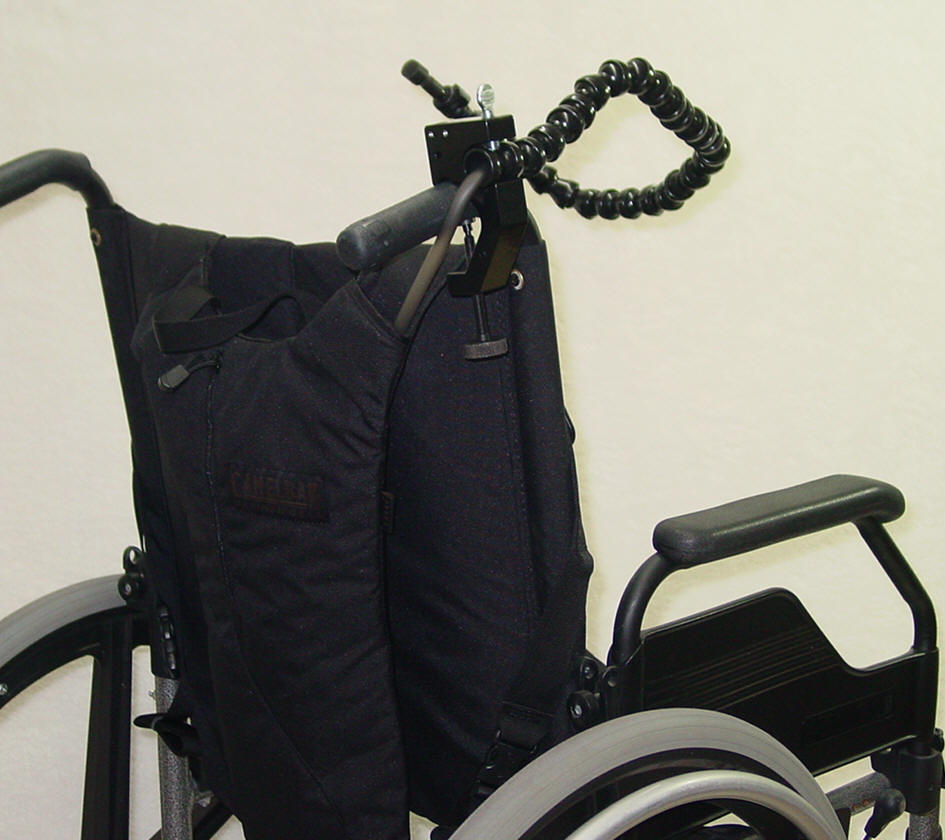 |
|
| Hydration Backpack with Drinking Tube Positioning (i.e., for Manual Wheelchairs) | Hydration Backpack with Drink Tube Positioning for Slide Track |
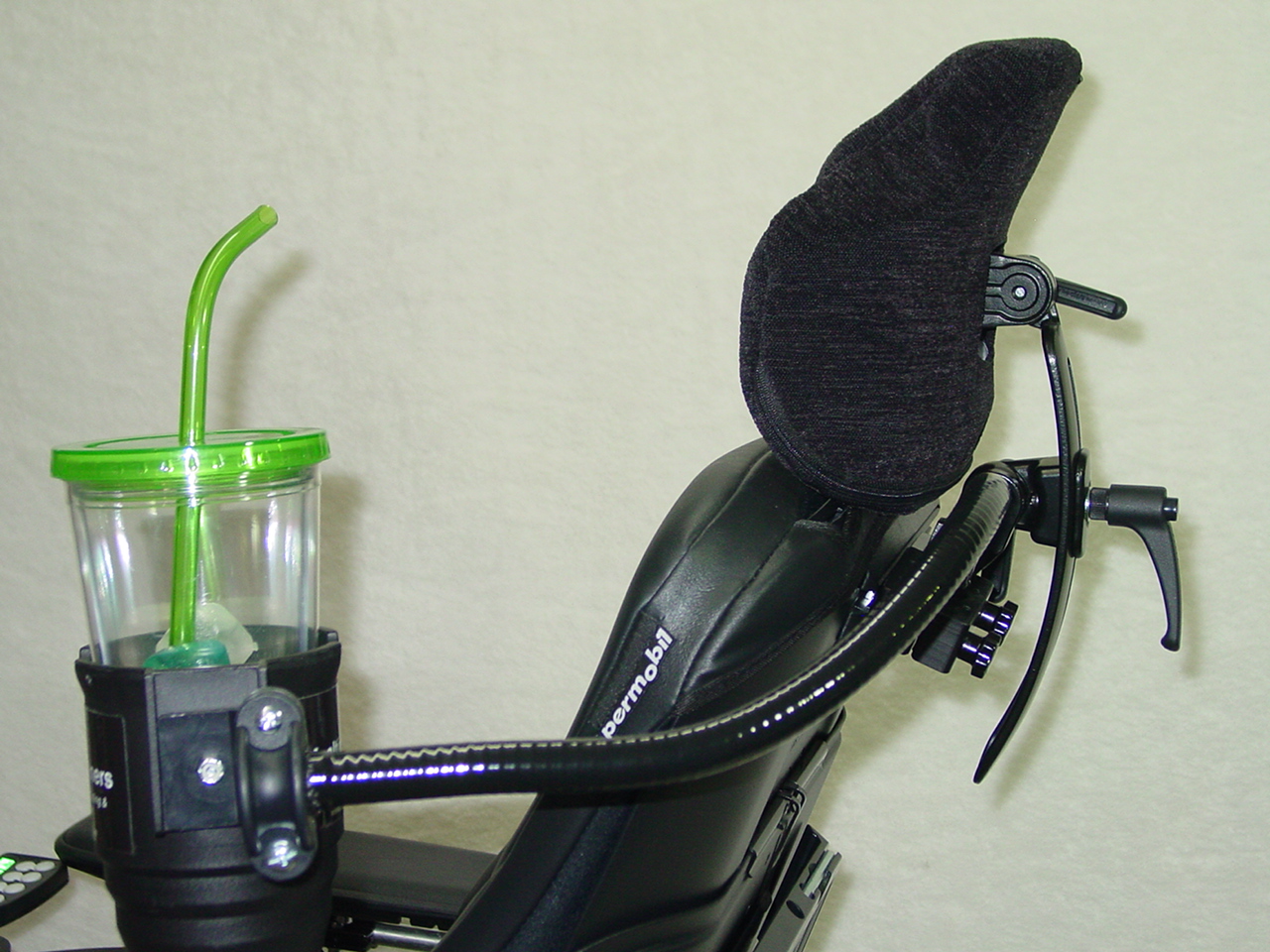 |
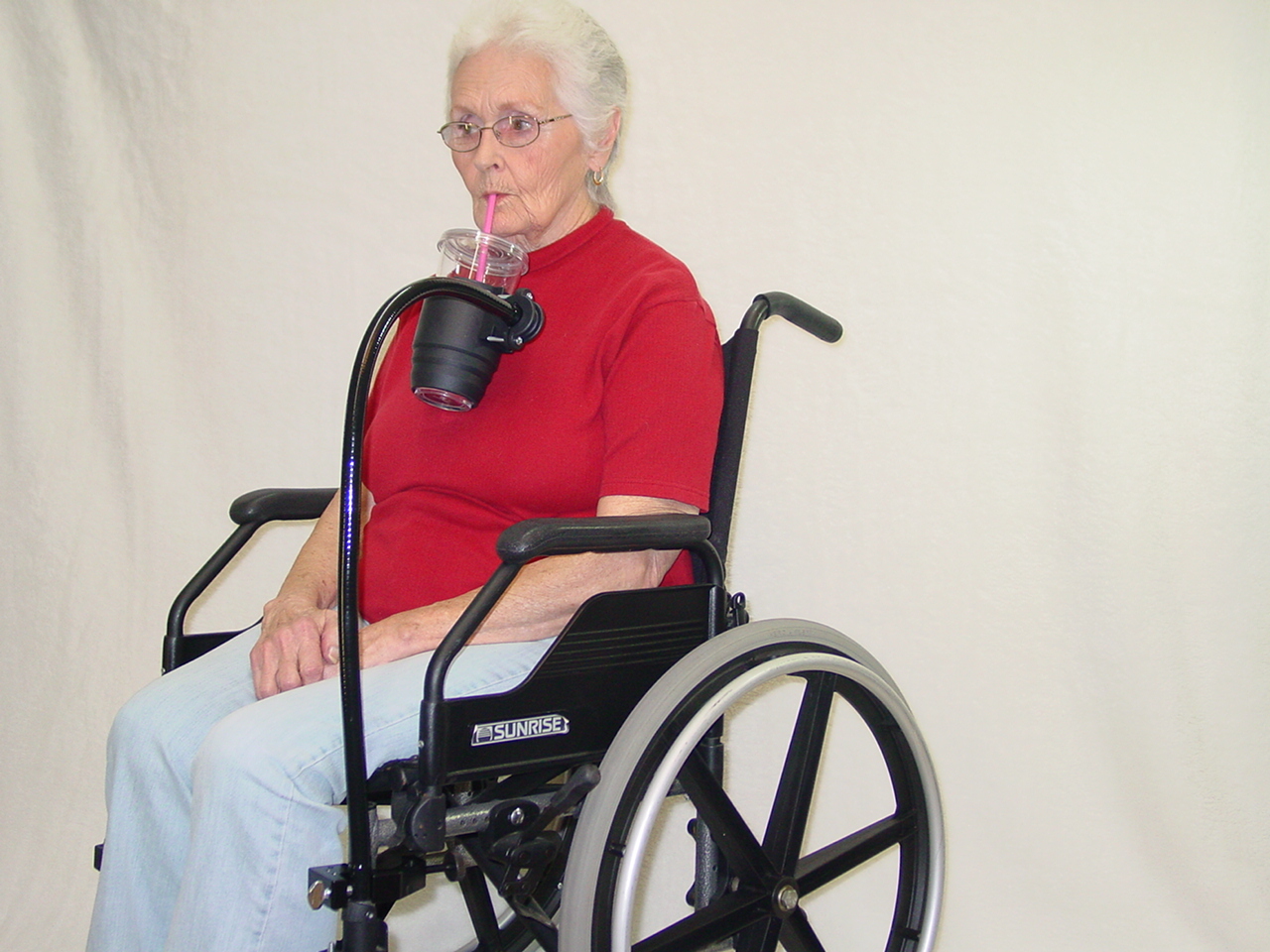 |
| Front Mounted Drinking System for Wheelchairs with Slide Track | Front Mounted Drinking System for Manual Wheelchairs |
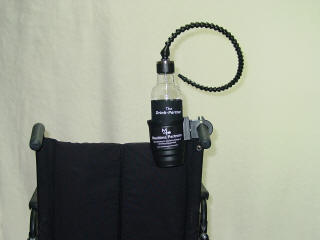 |
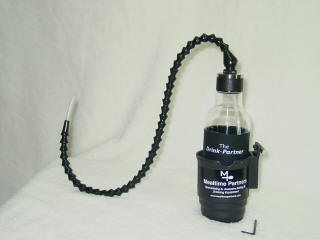 |
| Drink-Partner Mounted on a Wheelchair Handle | Drink-Partner for Slide-Track |
|
To view all of the Mealtime Partners drinking products, click here. Remember Mealtime Partners drinking products can be attached to powered wheelchairs with slide-tracks, manual wheelchairs with handles and/or tubular frames, or hospital beds with plastic or metal bed rails. For additional guidance about how to select the appropriate drinking system for your specific needs, click here. |
|
How to be a Good Mealtime Partner
What’s in a word? The definition of a duet is: two performers, musicians or singers, who perform together. In ballet, a pas de deux (translated from French literally means “not two”) is a dance for two people who, by the act of dancing together are “not two” but become one.
On a daily basis, those who need assistance with activities of daily living, like eating and drinking, and their care providers, perform duet after duet. With years of practice they have become experts at working together to complete a function without obstacles interfering with the event. For example, many mothers feed their children meal after meal with both individuals being fed at the same time, with conversation between them, and without stress. This is the ideal situation. However, for many more mealtime partners, meals will always be nerve-racking and hectic because of other factors: other children who also need attention; the person being fed has oral motor limits; swallowing difficulties create the need for a protracted mealtime; or, Mom works outside the home and must hurry meals because time is limited. With all of this to consider, the goal must still be to make meals an enjoyable “duet” for the two participants.
For family members, parents, grandparents and siblings, this is an ongoing desire. For a professional care provider, however, the personal commitment to reaching this goal is not always present. They are not necessarily emotionally vested in the same way a relative is. They may not have cared for the individual for very long and thus do not know them well. It is a job that they are doing to earn a living. They are paid to perform a “task”. (The definition of task is a piece of work assigned or done as part of one’s duties.) And, for many paid caregivers it is hard work that is burdensome, sometimes distasteful, for which they are poorly paid, and sometimes their efforts are not appreciated.
For those individuals the following thoughts are presented:
Meals are one of the most time consuming activities undertaken day after day if undertaken at a pace that is appropriate for the average person. However, it is one of the few activities required, when caring for another individual’s needs, where the care provider can sit down, and it is an activity that can be conducted at a relaxed pace, that is, for a properly trained caregiver. It should be viewed as a lull in the days schedule rather than another burden.
It should never be assumed that when a new feeding partner is hired that they will know any more about feeding someone than they learned feeding their own children. They probably will not know any of the good feeding practices discussed below, and certainly will not know the individual preferences of their new employer. Therefore, they must be provided with detailed instructions about how to provide mealtime support to be able to do a good job. To properly imprint a new care provider, proper training must be provided right from their first day on the job. Don’t wait until problems arise, but act proactively by giving directions from the very start to develop the best mealtime partnership.
Feeding partner practices that can help create an enjoyable mealtime are:
-
For the person feeding another person to sit down in a comfortable position before starting the meal. This has several benefits. First, it positions the feeding partner at a height that keeps their arm/hand at a level equal to the other person’s mouth, or a little below it. This promotes a chin tuck (the chin being lower than a right angle to the neck) with each bite of food being offered. Also, the sitting position gives the feeding partner time to take the weight off of their feet and rest a little.
-
After each bite of food has been removed from the utensil, put the utensil down until the person being fed either indicates they are ready for another bite or all chewing and swallowing appears to have stopped. While waiting, the feeding partner can rest their arm on the table to reduce the fatigue factor of feeding someone.
-
For the feeding partner, it is a good idea to have something available to drink while they are providing bites to their partner. This allows them to relax in between serving bites. It also gives them something to do for themselves during the meal, making meals a little bit more enjoyable for them.
-
If the person being fed is not extremely difficult to feed, the feeding partner might even consider eating their own meal at the same time.
-
The feeding partner should watch the person being fed and become familiar with their unique eating patterns. This allows them to set a comfortable pace and offer food according to those observed patterns.
-
The feeding partner should accept that a meal will usually take at least 20 minutes and not try to hurry the person eating. Hurrying places the person being fed at risk of choking. It also increases the likelihood that they will have indigestion or develop gastro esophageal reflux disease.
-
Talk with the person being fed, but don’t expect them to respond when they have food in their mouth. If clear speech is difficult for them, when asking a question, phrase it so a yes or no answer can be provided with a small nod of the head.
-
Do not think that the person being fed has finished their meal if they slow down. As a meal progresses two things happen: the person eating begins to tire, and, their appetite begins to become satiated. In either case, they do not want to eat as quickly.
-
Regardless of how busy you are during meals, do not become impatient. If the pace of the meal starts to cause the feeding partner to become impatient, it might be wise to have more frequent smaller meals that take less time than the normal breakfast, lunch and supper. Instead have a small breakfast, a mid-morning snack, a small lunch, a mid-afternoon snack, and a smaller supper.
Regardless of the final routines that are developed between the two participants in a meal, remember that both people should be patient with each other, to consider the other persons feelings, and to enjoy each meal as a time to relax and break up the daily routine for a while.
As final notes about mealtimes there are other definitions that should be considered: partnership – a cooperative relationship between people who agree to share responsibility for achieving some specific goal; and, partner –one that is united or associated with another in an activity of common interest.
The Mealtime Partner Dining System was designed specifically to become a partner to the person eating and facilitate their being able to eat independently instead of them being fed. The Mealtime Partner allows people to choose what food they will eat out of the three bowls that are available on the device and to choose when each bite of food is served to them. Ultimately, it is a partner that facilitates mealtime independence, and, it is very patient.
|
Did You Know?
Did you know
Dasia Taylor, a high school student at
Iowa City West High School, has invented suture material
that changes color when a wound that has been stitched up
with it, becomes infected? In a precursor to a career in
medicine, Taylor has been working on perfecting her ability
to stitch up a wound (i.e., suture) for some time. While
participating in a school science fair she conducted
research examining the potential of finding a natural
indicator that would cause suture material to change color
if a wound became infected. She believed that this could
help people in developing countries more easily identify
that a surgical site has become infected. Taylor found that
Beet juice stained suture material bright red. Beet juice is
red in a pH environment of 5 and turns purple in a pH
environment of 8. The pH level on the surface of normal skin
is typically 5, however, the pH level of 8 indicates that
skin has an infection. Therefore, Beet juice stained sutures
are red in a pH environment of 5 and turn purple in a pH
environment of 8, indicating an infection. For more information about this remarkable student: click here. |
Mealtime Partners Website Navigation:
Home | Dining | Drinking | Videos | All Products | Warranty | Ordering | Calendar | FAQ | Newsletters | Contact
Please send comments and suggestions to newsletters@mealtimepartners.com
Copyright © Mealtime Partners, Inc. 2021
All rights reserved.